The dreaded burpee. Watch any boot camp or fitness class, and you’ll see this exercise being performed usually as a finisher to leave their clients in a sweaty mess. But can burpees also be used to build muscle?
Burpees don’t build muscle as they don’t satisfy the key mechanisms of muscle growth. However, the burpee with a push-up can build muscle mass in the upper body pushing muscles.
But if burpees don’t build muscle, what are the benefits of doing them?
Table of Contents
What Muscles Do Burpees Work?
One of the reasons burpees are often prescribed in training programs is because they work a large number of muscles. But it also depends on how the burpee is performed. If we look at a traditional burpee where the arms are straight when in the push-up or plank position of the burpee, then the exercise primarily targets the legs.
That is the calves, quadriceps, glutes, and even the core musculature. The shoulders and arms will support the upper body through an isometric contraction. The more hardcore version of the burpee is getting the body flat on the floor after the legs are kicked back.
You are essentially adding a push-up to the burpee. Along with the calves, quadriceps, glutes, and crore, this burpee variation heavily works the upper body muscles of the chest, shoulders, and triceps.
Why Burpees Don’t Build Muscle
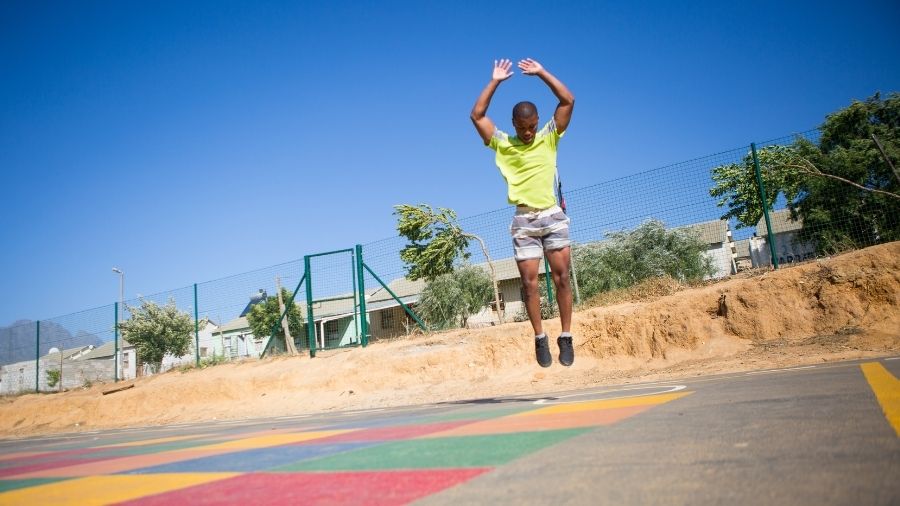
You may be wondering, if burpees are almost a full-body exercise, why wouldn’t they help you build muscle? It comes down to the key mechanisms of muscle growth (known as hypertrophy). These are mechanical tension and metabolic stress [1].
Mechanical tension simply refers to the tension generated by the muscle. It is maximized with load and putting the muscle through the stretch. Also known as lifting heavy through a full range of motion. Even light weights can generate high levels of mechanical tension when lifting to failure or close to it [2].
On the other hand, metabolic stress is the build-up of nasty by-products as a result of making energy for the muscles to use [3]. This is often associated with the “burn” feeling you get on those last few reps of a grueling set.
Burpees don’t maximize either of these essential hypertrophy mechanisms, and therefore, burpees don’t build muscle. The external load used is too light, and it is rarely the fatigue from the leg muscles that stop your set short of your goal. It is your heart pounding out of your chest that slows you down.
Suppose you are a novice to strength training. In that case, burpees may initially build muscle as even endurance training will simultaneously develop strength, muscle size, and endurance [4]. But as you become accustomed to exercise, you’ll be sorely disappointed not to see your muscles grow.
The burpee variation where you get flat on the floor is a better option to build muscle in the upper body as you are essentially performing multiple push-ups.
Advantages Of Burpees
Improve Cardiovascular Fitness
It’s no secret that burpees are the most hated portion of any workout, for a good reason. They are tough. You feel your heart trying to escape from your rib cage and the blood rising to your brain. But this elevation in heart rate will improve your overall cardiovascular fitness.
Suppose you don’t enjoy other forms of traditional cardio, or you’re a masochist who loves punishment. In that case, the burpee can be a simple way to keep your heart healthy.
Can Do Them Anywhere
The most significant benefit of the burpee is that you can do them anywhere. Are you traveling for work? Bust out ten reps by your hotel bed. Are you stuck at home? Head outside or in your living room and get your reps in.
No excuse can be made not to use the burpee in your workout as you don’t need any equipment.
Burn Fat
Burpees don’t directly burn fat. Burning fat and losing weight comes down to being in a caloric deficit, as in, consuming fewer calories (energy) than you use. However, burpees expend a lot of energy. The unique benefit is having to get on and off the floor continuously. Even sitting on the floor and standing back up will skyrocket your heart rate. Doing burpees take this a step further.
Disadvantages Of Burpees
Intensity Is Always High
It’s difficult to perform burpees at low intensity. You’d need to move very slow and not perform a jump. It turns the exercise into something that doesn’t resemble a burpee at all. The problem with high-intensity exercises is that they are challenging to recover from. You lose out on essential adaptations that occur at low intensities.
Most specifically, increasing the size of the heart chamber that allows you to pool more blood per heartbeat is an adaptation that only happens with low-intensity cardio. This will substantially reduce your resting heart rate and improve your overall aerobic conditioning.
Can Cause Wrist And Hand Soreness
You can get overzealous with how quickly you are doing reps if you’re trying to bust out burpees for time. We’ve all been there. Rushing the last few reps. Instead of placing our hands on the floor, we drop onto our hands.
The jarring of the hands and wrists can cause lingering soreness. Worst case, it can cause a wrist injury if they aren’t strong enough.
How To Do A Burpee
Step 1
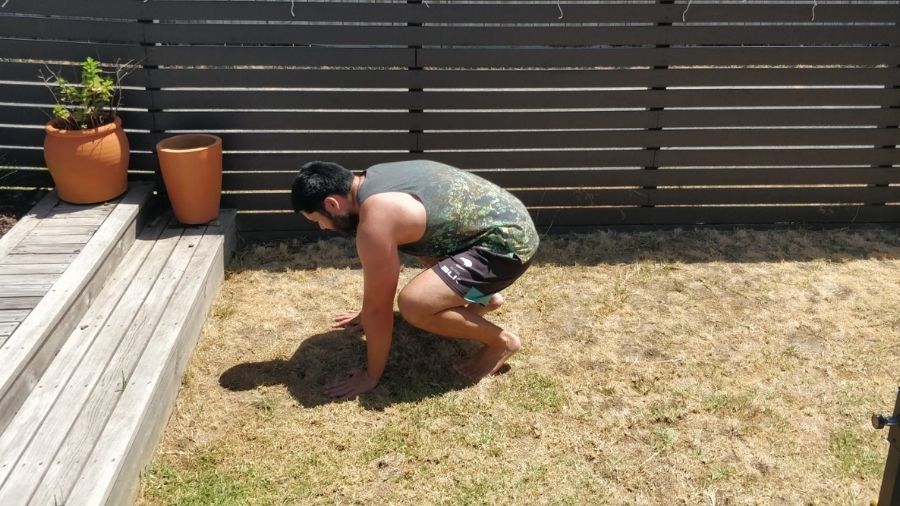
From the stand position, crouch down so your hands are on the floor. Don’t fall onto your hands as you can injure yourself doing this.
Step 2
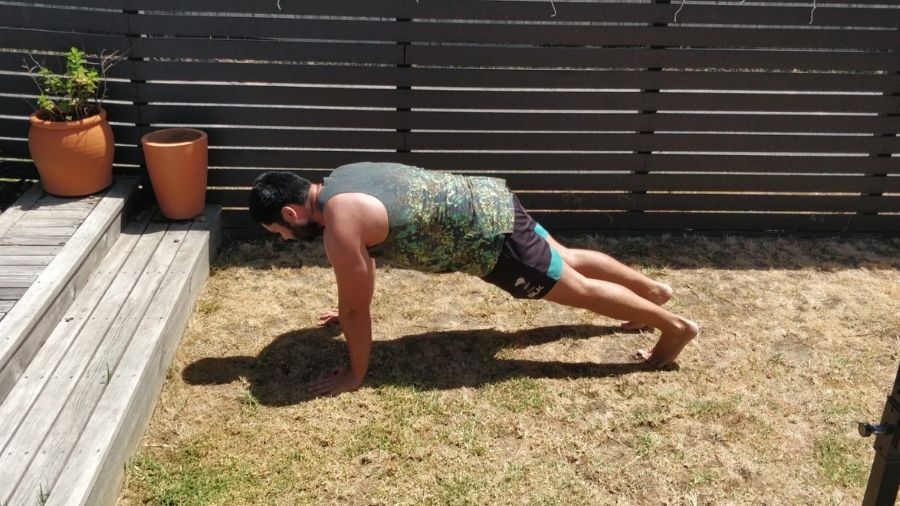
Kick your legs back so you are in a plank position with straight arms.
Step 3
Jump your legs back to the crouched position with your hands still on the ground. If you are performing the push-up variation, lie flat on the floor and push back to the plank position before this step.
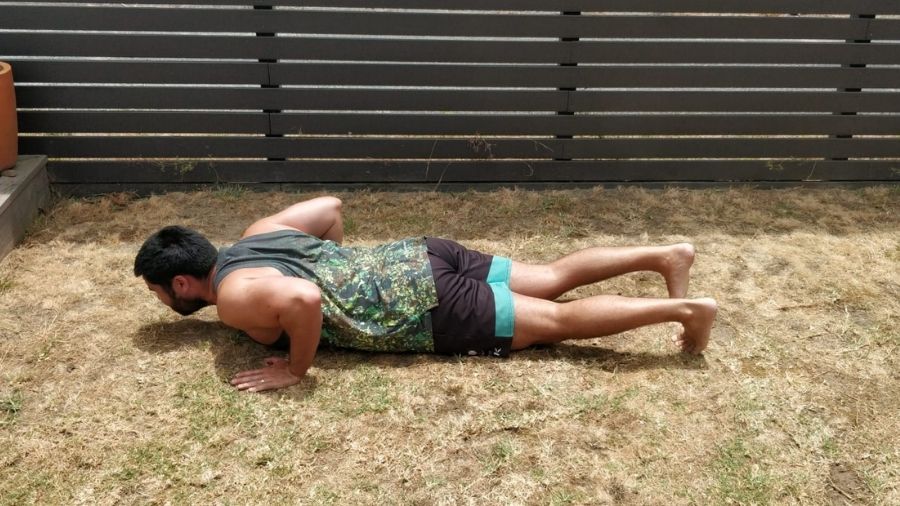
Step 4
Explode into the air and perform a small jump with your hands moving over your head.
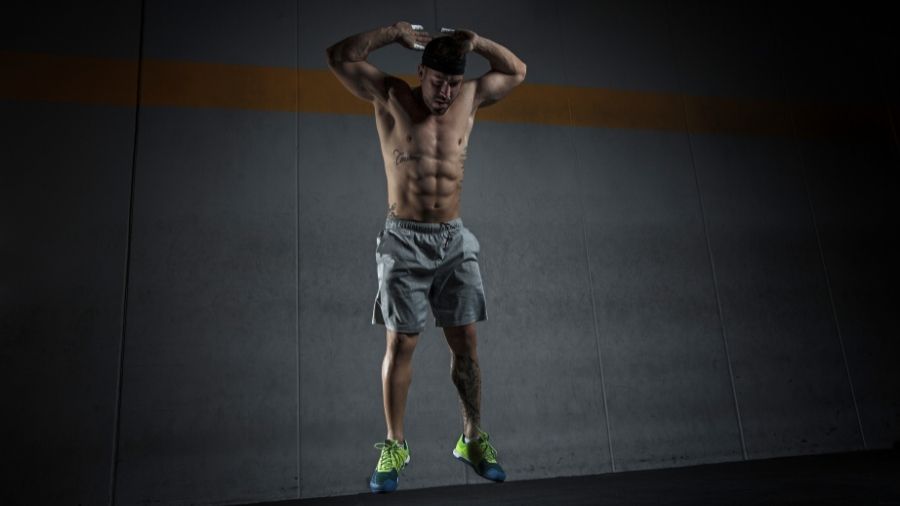
Frequently Asked Questions
Do Burpees Build Back Muscles?
Burpees do not build the muscles of the back. The back muscles are responsible for upper body pulling motions. The burpee does not involve any pulling movements and, therefore, will not build the back muscles. Instead, incorporate various pull-ups and rows to build a large back.
Do Burpees Build Leg Muscles?
While you need to jump when performing a burpee continually, the force and tension generated are not enough to build the muscles of the legs. The action in the burpee is predominately concentric, meaning the muscles of the legs only work in the upwards phase. We know that eccentric exercise is highly responsible for muscle growth.
Do Burpees Build Abs?
Burpees don’t build abs. While the trunk muscles are used to stabilize the upper body when the legs are kicked back (plank position), the total duration of the exercise isn’t enough to stimulate any meaningful muscle growth.
Do Burpees Burn Fat?
As mentioned earlier, burpees don’t directly burn fat, but they help with expending a lot of energy during exercise.
Summary
If you’re looking to build muscle, the burpee is not your best choice. Traditional weight training is what you need. However, if you are looking for an exercise to give you that cardiovascular hit with no equipment and little space, the burpee can be a great choice.
References
1. Schoenfeld, B. J. (2010). The mechanisms of muscle hypertrophy and their application to resistance training. The Journal of Strength & Conditioning Research, 24(10), 2857-2872.
2. Schoenfeld, B. J., Peterson, M. D., Ogborn, D., Contreras, B., & Sonmez, G. T. (2015). Effects of low-vs. high-load resistance training on muscle strength and hypertrophy in well-trained men. The Journal of Strength & Conditioning Research, 29(10), 2954-2963.
3. Schoenfeld, B. J. (2013). Potential mechanisms for a role of metabolic stress in hypertrophic adaptations to resistance training. Sports medicine, 43(3), 179-194.
4. Methenitis, S. (2018). A brief review on concurrent training: from laboratory to the field. Sports, 6(4), 127.
